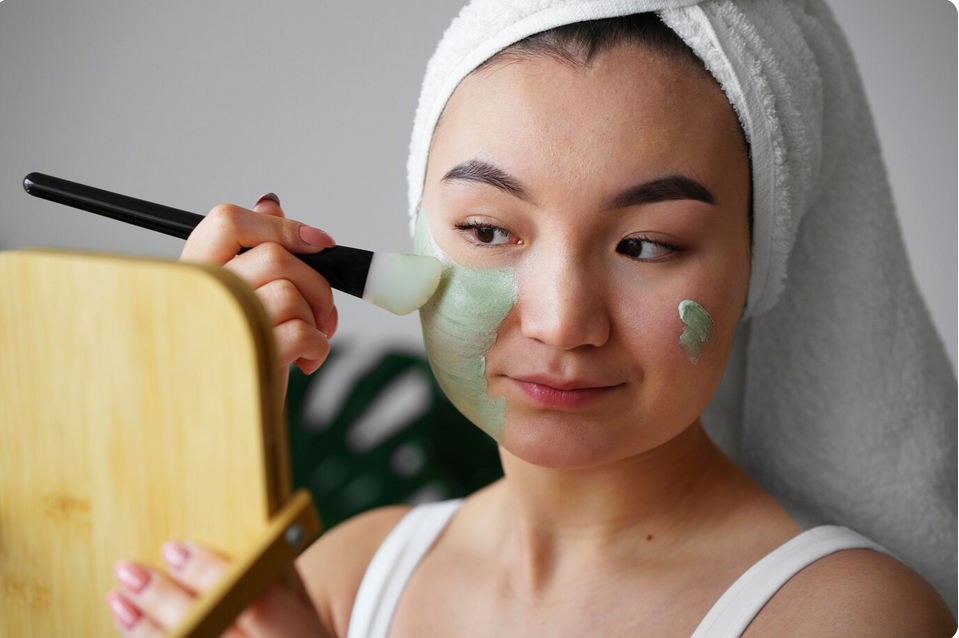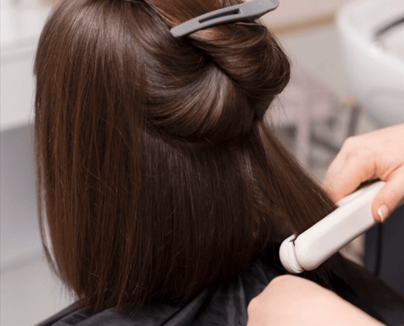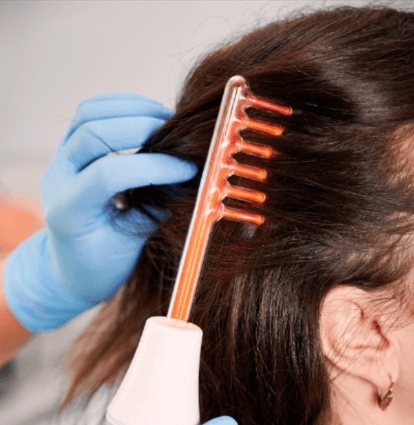Summary: Your Personalized Melasma Skincare Routine
Melasma is a stubborn skin condition marked by brown or grayish patches, commonly seen on the cheeks, forehead, upper lip, and chin. While laser treatments and oral medications play an important role in managing it, a consistent, dermatologist-approved skincare routine is the foundation for both prevention and long-term control.
In South Korea—where skincare is both a science and an art—dermatologists use a layered, proactive routine that balances pigment correction, skin barrier repair, inflammation control, and sun protection. Here’s a look at the best skincare routine used in top Korean clinics to prevent and treat melasma effectively.
🔑 Korean Skincare Philosophy: Why It Works for Melasma
Korean skincare routines are known for:
- Gentle layering (instead of harsh, stripping products)
- Barrier-first approach (to prevent irritation-triggered pigmentation)
- Scientifically supported brightening agents
- Smart sun care and repair strategies
Melasma is often aggravated by heat, light, hormones, and inflammation. Korean skincare is uniquely equipped to target all these factors simultaneously.
🌞 Morning Routine: Protect and Prevent Pigmentation
Goal: Shield the skin from UV, heat, and environmental triggers that can worsen melasma.
✅ Step 1: Gentle Brightening Cleanser
Use a low-pH, sulfate-free cleanser that contains brightening agents like:
- Licorice root extract
- Vitamin C
- Arbutin
🧴 Example: Many Korean clinics recommend cleansing pads infused with azelaic acid or niacinamide for gentle exfoliation without irritation.
✅ Step 2: Antioxidant Serum (Vitamin C or Glutathione)
A lightweight, non-irritating antioxidant serum can:
- Reduce oxidative stress
- Brighten pigmentation
- Enhance sunscreen effectiveness
Look for:
- Ascorbyl glucoside (a stable form of Vitamin C)
- Glutathione (common in Korean whitening products)
🧴 Clinic Tip: Korean dermatologists often recommend serums in airless packaging to maintain potency.
✅ Step 3: Melanin-Inhibiting Essence or Ampoule
Lightweight essence or ampoule with ingredients like:
- Tranexamic acid
- Niacinamide (5%)
- Kojic acid
- Azelaic acid
These ingredients help control tyrosinase activity (the enzyme that produces melanin).
✅ Step 4: Barrier-Repairing Moisturizer
Even oily or acne-prone patients with melasma need moisture. A compromised skin barrier can lead to inflammation and hyperpigmentation.
Look for:
- Ceramides
- Centella asiatica
- Panthenol
- Beta-glucan
🧴 Popular in Korea: Water-gel moisturizers with high hydration but non-comedogenic formulas.
✅ Step 5: Broad-Spectrum Sunscreen (SPF 50+ PA++++)
This is the most important step. Korean sunscreens are lightweight, wearable, and effective.
Look for:
- UVA/UVB and HEV (blue light) protection
- Infrared-blocking ingredients like antioxidants or thermal protectants
- Mineral + chemical hybrid formulas for better tolerance
🧴 Clinic Tip: Use cushion-type SPF for reapplication every 2–3 hours.
🌙 Evening Routine: Repair, Resurface, and Suppress Melanin
Goal: Calm inflammation, fade pigmentation, and boost skin turnover while you sleep.
✅ Step 1: Double Cleansing
- Oil-based cleanser: To remove sunscreen and makeup
- Water-based cleanser: Mild formula to cleanse without stripping
✅ Step 2: Melanin-Suppressing Toner
After cleansing, use a toner that preps the skin and contains:
- Arbutin
- Tranexamic acid
- Niacinamide
Korean toners are watery and fast-absorbing, allowing for effective layering.
✅ Step 3: Functional Serum (Dermatologist-Prescribed if Needed)
This step often includes doctor-prescribed serums such as:
- RX-strength Tranexamic acid or hydroquinone (under supervision)
- Retinaldehyde or encapsulated retinol (gentler than pure retinol)
- Peptides for skin regeneration
Korean dermatology clinics offer prescription-strength products compounded in-house, tailored to each patient’s skin type.
✅ Step 4: Regenerating Night Cream or Sleeping Mask
Skin heals best overnight. Use a nourishing night cream containing:
- Epidermal growth factors (EGF)
- Madecassoside (from Centella)
- Squalane or hyaluronic acid
🧴 Clinic Tip: Alternating with a brightening sleeping mask 2–3 times a week can improve texture and tone.
✅ Optional: Spot Treatment
If your melasma is patchy or uneven, targeted treatments include:
- Prescription hydroquinone cream (short-term use only)
- Spot masks with glycolic acid or lactic acid
- Pimple patches for post-inflammatory pigmentation (PIH)
🧪 Weekly Clinic-Recommended Add-Ons
🔁 1–2x Weekly: Gentle Exfoliation
Use mild acid peels (mandelic or lactic acid) or enzyme-based exfoliators to:
- Remove dead cells
- Allow actives to penetrate better
- Avoid irritation that could worsen pigmentation
🔬 1x Weekly: Home LED Mask (Red + Near-Infrared Light)
Popular in Korea for:
- Calming inflammation
- Stimulating collagen
- Improving skin tone
Many Korean clinics offer FDA-approved home-use LED masks to maintain results between treatments.
📋 Clinic Prescription-Only Options
Some Korean clinics prescribe custom-blended creams or ampoules made with:
- Hydroquinone (short-term)
- Retinal + TXA + Niacinamide combos
- Antioxidants like resveratrol or idebenone
- Calming botanicals
These are used under dermatologist supervision for best results and to minimize side effects.
☀️ Sun Protection: The Daily Non-Negotiable
Melasma cannot be controlled without consistent sun protection. Korean clinics teach patients to:
- Reapply sunscreen every 2–3 hours (especially outdoors or near windows)
- Use sun hats, visors, and parasols
- Avoid peak sunlight hours (10 AM – 3 PM)
- Avoid heat exposure (saunas, hot yoga, etc.)
🧴 Top Dermatologist-Recommended Korean Brands for Melasma
| Brand | Notable Products for Melasma |
|---|---|
| Dr. G | Brightening Vita-C Essence, Barrier Cream |
| Torriden | DIVE-IN Soothing Cream (with low-molecular HA) |
| TROIAREUKE | Acsen Selemix Serum (post-treatment recovery) |
| SkinRx Lab | MadeCera Cream and Ampoule |
| ISOI | Blemish Care Serum (Arbutin + Bulgarian Rose) |
| Round Lab | Birch Juice Moisturizer + SPF Combo |
✨ Final Thoughts: Consistency is More Important Than Complexity
Korean clinics emphasize that managing melasma is a marathon, not a sprint. A simple but well-structured routine, consistent sun protection, and periodic check-ins with your dermatologist are key.
Whether you are undergoing laser treatments or looking to prevent flare-ups naturally, this layered Korean skincare routine can help reduce pigmentation, prevent recurrence, and improve overall skin health.




